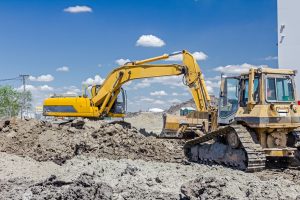OSHA wants you to comply with its new silica rule. No, really, it does.
On Sept. 23, the administration implemented some controversial adjustments to Standard 29 CFR 1926.1153 – the respirable silica construction standard. The new rule not only lowered the permissible exposure limit (PEL) to one-fifth of the previous maximum, it also implemented stricter medical surveillance standards (See Here).
Initially, the rule was set for June 23. However, in April, OSHA announced a delay in enforcement in order to conduct additional outreach, and to provide educational materials and guidance for employers. Now, with the new rule in place, OSHA is offering another lifeline for U.S. construction companies. During the first 30 days of enforcement, the administration will evaluate good faith efforts taken by employers in their attempts to comply with the new silica rule.
(Related Article: What You Need To Know About The OSHA Silica Rule)
The “New” Standard For Working With Crystalline Silica
When most people hear the word “silica,” they tend to think of things such as playground sand or silica gel packets labeled with “Do Not Eat” stickers. That may lead some to wonder why OSHA has taken such a strong interest in the mineral. It’s because respirable crystalline silica, which is at least 100 times smaller than typical sand grains, affects approximately 2.3 million U.S. workers. Furthermore, the American Cancer Society has classified the mineral as a known human carcinogen, or cancer-causing substance. That said, even the slightest exposure to crystalline silica can lead to deadly, incurable diseases that permanently damage the lungs and respiratory system, such as silicosis and COPD.
The silica standard dates back to 1971, as it was issued just months after the U.S. Congress created OSHA. After three years, the Centers for Disease Control recommended that the administration lower the PEL, because the standard, as written, did not adequately protect workers from silica exposure. While many employers agreed, many also opposed. Thus, it wasn’t until 2016, over four decades later, that OSHA finalized the silica standard.
(Related Article: Silica Rule For Workers Updated After 40-Plus Years)
The new rule requires that employers limit their employees’ exposure to respirable crystalline silica, whether it be by controlling silica dust, or the amount of exposure that each employee experiences. For the construction industry, no matter which control method is used, employers are required to do the following:
- Establish and implement a written exposure control plan that identifies tasks that involve exposure and methods used to protect workers, including procedures to restrict access to work areas where high exposures may occur.
- Designate a competent person to implement the written exposure control plan.
- Restrict housekeeping practices that expose workers to silica where feasible alternatives are available.
- Offer medical exams—including chest X-rays and lung function tests—every three years for workers who are required by the standard to wear a respirator for 30 or more days per year.
- Train workers on work operations that result in silica exposure and ways to limit exposure.
- Keep records of workers’ silica exposure and medical exams.
Failure to comply with the new rule may result in fines of anywhere from $12,675 to $126,749 per violation.
Making An Effort in Good Faith
For some, it may seem like OSHA wants to issue fines and citations at will. But, in reality, the administration wants to keep workers safe in their workplaces. The intent of the new rule is not to “stick it” to employers, but to ensure the safety, health, and overall well-being of their employees. As a way to reinforce that logic, “OSHA will assist employers who are making good faith efforts to meet the new requirements to assure understanding and compliance (OSHA.gov).” However, if an inspection shows that the employer is not making an effort to comply, then that employer will be subject to citation pending National Office review.
What’s Next For the New Silica Rule?
The construction standard marked the beginning of a four-year implementation schedule for crystalline silica. Enforcement for General Industry and Maritime begins on June 23, 2018. This will affect industries such as: Asphalt Roofing, Concrete, Cut Stone, Dental Laboratories, Foundries, Jewelry, Porcelain Enameling, Pottery, Railroads, Ready-Mix Concrete, Shipyards, Structural Clay, and Support Activities for Oil & Gas Operations.
Are you in compliance?

Create a Less Disruptive, More Productive Occupational Health Plan with Worksite Medical!
Are you looking for a way to keep your team safe, while also limiting risk and increasing production? Simplify your medical plan today. We help team leaders like you develop less disruptive, more convenient occupational health plans that comply with complex industry standards, thus creating a healthier, more productive workforce. Take control of your medical testing program, and make sure your team is within NFPA 1582 requirements.




